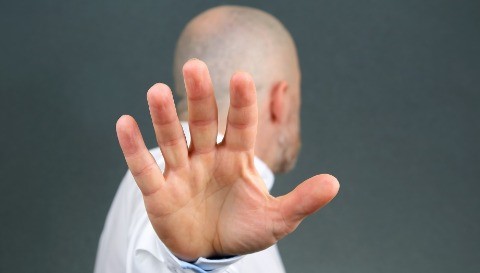He Wanted Me To “Turn The Other Cheek”

This week I received an anti-Semitic email, which I ignored and immediately deleted. However, years ago, while staffing a Jewish information table on a college campus, I was the victim of a verbal anti-Semitic outburst that ultimately turned violent. The individual, who disliked Jews, tried to punch me.
Fortunately, years of martial arts training enabled me to defend myself. I blocked the punch and held the assailant down until the police arrived.
One student who witnessed the event was visibly upset at the attack but insisted I overreacted. I explained that although some religions teach pacifism, Judaism encourages self-defense and does not require us to “turn the other cheek.”[1]
According to Christian scholars, when Jesus said to “turn the other cheek” (Matthew 5:38-39), he was condemning revenge and retaliation, as well as the biblical statement, “an eye for an eye” (Exodus 21:24), which he apparently misconstrued as barbaric.
The “eye for an eye” statement is found in this week’s Torah portion Mishpatim (Exodus 21:1–24:18). At first glance, this statement appears to promote revenge. However, by carefully studying related Biblical passages, we can appreciate why Judaism never understood this passage literally, for this would contradict the well-known Torah directive, “Do not seek revenge… but love your neighbor as yourself” (Leviticus 19:18).
Rather, in the same way Exodus 21:19 speaks about “payments” for damages, Judaism always understood “an eye for an eye” as teaching the principle of monetary compensation for injuries.[2]
However, compensation was only a part of making amends. Our sages explain that the Torah used the more graphic [eye for an eye] imagery so the offender would contemplate the profound damage he caused the victim and repent and ask for forgiveness. It was not sufficient to “simply write a check.”
So, if we do not condone revenge, what about self-defense? This week’s Torah portion also teaches, “If a thief was discovered breaking in and was struck down and died, his death is not considered murder” (Exodus 22:1). This ruling applies when you had no other way of preventing the thief from killing you, as our sages taught, "If someone comes to kill you, rise against him and kill him first” (Talmud Sanhedrin 72a).
Killing in self-defense is not the same as murder. This principle explains why the correct translation of “lo tirzach - לא תרצח” in the Ten commandments is “you shall not murder,” and not, “you shall not kill” (Exodus 20:13).
While killing is an absolute last resort, we are commanded to defend ourselves and come to the aid of others as it says, “do not stand idly by while your neighbor’s blood is shed” (Leviticus 19:16). For example, when Jews returned to Jerusalem from exile and started construction of the Second Temple, they took precautions with “spears, shields, bows and armor” (Nehemiah 4:16) against enemies who threatened to attack them.
Unlike some people who read the Bible out of context and come to mistaken conclusions, Judaism requires that we see the big picture to appreciate the Torah’s true meaning.
Judaism envisions a time when self-defense will be unnecessary because “they will beat their swords into plowshares and their spears into pruning hooks. Nation will not take up sword against nation, nor will they train for war anymore” (Isaiah 2:4).
However, until that time, the Torah instructs us to protect ourselves and those close to us from physical harm. We must also safeguard against “enemies” who threaten our heritage and beliefs by arming ourselves with Torah knowledge, Jewish pride, and spirituality.
Shabbat Shalom,
Rabbi Bentzion Kravitz
[1]
A similar statement, “Let him offer his cheek to one who strikes him; let him be filled with reproach” (Lamentations 3:30), does not teach pacifism. In context, it teaches to receive afflictions with the belief that whatever God does is ultimately for the good, even if the purpose is not apparent.
[2] Amazingly, as one prominent sage points out, “an eye for an eye” in Hebrew “עין תחת עין - ayin tachat ayin” hints to payment with money. The word “תחת - tachat” literally means “under,” and if you look at a Hebrew alphabet chart, the letters that are under [after] the three letters of “עין - eye” are the three letters that spell [כסף - money].
© 2021 Jews for Judaism
P.O. Box 351235, Los Angeles, CA 90035 • 310-556-3344
info@JewsforJudaism.org • www.JewsForJudaism.org • www.SMARTalks.com
 He Wanted Me To “Turn The Other Cheek”
He Wanted Me To “Turn The Other Cheek”